Pad Mounted Transformer Sizes: A Comprehensive Guide for Electrical System Planning?
Are you struggling to choose the right pad mounted transformer size for your project? You’re not alone. Many engineers find this task challenging and confusing.
Pad mounted transformer sizes range from 15 kVA to 5000 kVA, catering to various applications from residential to industrial. Selecting the correct size is crucial for system efficiency, cost-effectiveness, and long-term reliability. This guide will help you navigate the complexities of transformer sizing.
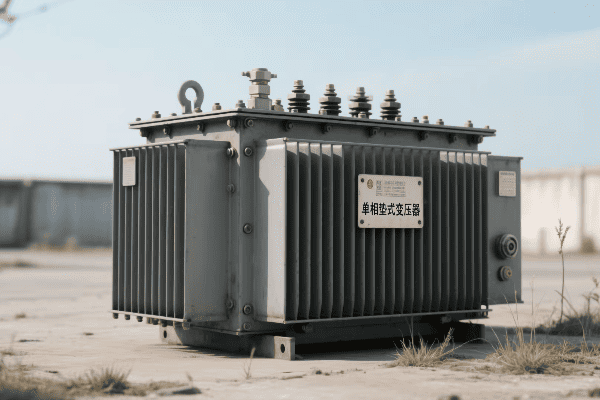
Let’s dive into the world of pad mounted transformer sizes and uncover the secrets to optimal electrical system planning.
Understanding the Range of Pad Mounted Transformer Sizes: From Residential to Industrial Applications?
Have you ever wondered why some transformers are as small as a fridge while others are as big as a car? The size difference is not just for show – it serves a crucial purpose.
Pad mounted transformer sizes vary widely to meet diverse power needs. Residential applications typically use 15-150 kVA transformers, commercial settings often require 150-2500 kVA, and industrial applications can use up to 5000 kVA or more. The size directly correlates with the power capacity and voltage requirements.
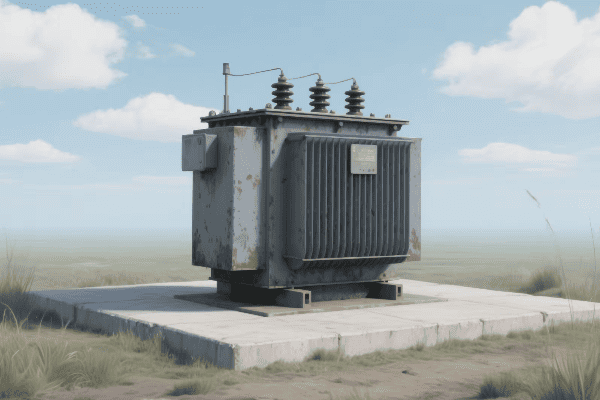
Breakdown of Transformer Sizes by Application
-
Residential Transformers
- Size range: 15-150 kVA
- Typical voltage: 120/240V secondary
- Serve single-family homes to small apartment complexes
-
Commercial Transformers
- Size range: 150-2500 kVA
- Typical voltage: 120/208V or 277/480V secondary
- Power office buildings, shopping centers, and schools
-
Industrial Transformers
- Size range: 500-5000 kVA or more
- Typical voltage: 4160V or 13800V primary, various secondary
- Supply factories, data centers, and large industrial complexes
-
Specialized Applications
- Size varies based on specific needs
- Examples: renewable energy integration, transportation systems
| Application | Size Range (kVA) | Typical Secondary Voltage | Common Uses |
|---|---|---|---|
| Residential | 15-150 | 120/240V | Homes, small apartments |
| Commercial | 150-2500 | 120/208V or 277/480V | Offices, malls, schools |
| Industrial | 500-5000+ | Varies | Factories, data centers |
| Specialized | Varies | Varies | Renewable energy, transit |
In my years of experience with pad mounted transformers, I’ve encountered a wide range of sizes across various projects. I remember a residential development project where we used 75 kVA transformers to power clusters of townhouses. Each transformer served about 8-10 units, providing a perfect balance between capacity and cost-effectiveness.
On the other end of the spectrum, I once worked on a large manufacturing plant that required a 3000 kVA transformer. This massive unit was crucial for powering heavy machinery and maintaining consistent production. The size difference between this and the residential transformers was staggering – you could fit several of the 75 kVA units inside the industrial transformer’s enclosure!
One interesting trend I’ve noticed is the increasing demand for mid-range transformers in the 300-750 kVA range. This is largely due to the growth of mixed-use developments that combine residential, commercial, and light industrial spaces. These transformers need to handle diverse loads and provide flexibility for future expansion.
I also had an eye-opening experience with specialized transformers for a light rail project. We used compact 500 kVA units designed specifically for transit applications. These transformers had to meet unique requirements for vibration resistance and rapid load changes, showcasing how transformer design can be adapted for specific use cases.
Understanding this range of sizes is crucial for any electrical engineer or system planner. It’s not just about the kVA rating – factors like voltage requirements, load characteristics, and future growth all play a role in selecting the right size. As we move towards more energy-efficient and smart grid-compatible systems, the ability to choose the optimal transformer size becomes even more critical.
Selecting the Optimal Pad Mounted Transformer Size: Matching Capacity to Load Requirements?
Have you ever faced the dilemma of choosing between a larger, more expensive transformer and a smaller, more affordable one? This decision can make or break your electrical system’s efficiency and reliability.
Selecting the optimal pad mounted transformer size involves analyzing peak load demands, considering load growth, and factoring in efficiency at various load levels. A properly sized transformer typically operates at 50-70% of its rated capacity under normal conditions, allowing for overload capacity and future expansion.
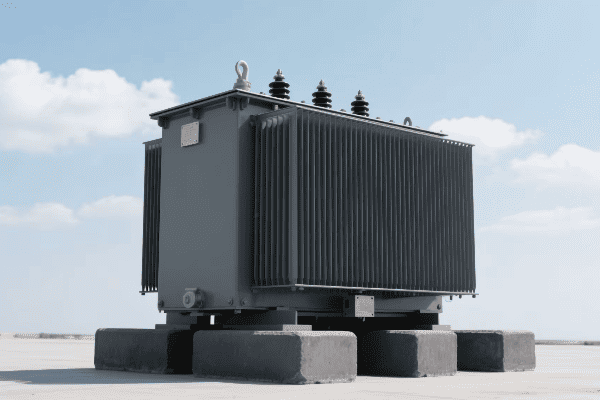
Key Factors in Transformer Size Selection
-
Peak Load Analysis
- Calculate maximum expected load
- Consider seasonal variations and peak usage times
-
Load Growth Projection
- Estimate future load increases
- Factor in potential expansions or changes in usage
-
Efficiency Considerations
- Analyze transformer efficiency at different load levels
- Balance between capacity and energy losses
-
Overload Capacity
- Allow for short-term overloads
- Consider emergency scenarios
-
Environmental Factors
- Account for ambient temperature and altitude
- Consider cooling requirements
| Factor | Importance | Typical Consideration |
|---|---|---|
| Peak Load | Critical | 80-90% of transformer capacity |
| Load Growth | High | 15-25% additional capacity |
| Efficiency | Important | Optimal at 50-70% load |
| Overload | Necessary | 20-30% short-term capability |
| Environment | Situational | De-rate in extreme conditions |
In my experience, selecting the right transformer size is as much an art as it is a science. I recall a project for a new office complex where we had to balance current needs with future expansion plans. Initially, the client wanted a 750 kVA transformer based on their immediate requirements. However, after analyzing their growth projections and efficiency data, we opted for a 1000 kVA unit.
This decision proved crucial. Within three years, the complex added a new wing, and the larger transformer easily accommodated the increased load without needing an upgrade. Had we gone with the smaller unit, they would have faced costly replacements or efficiency issues.
One challenging aspect of sizing is dealing with varying load profiles. I worked on a mixed-use development that combined residential, retail, and office spaces. The load fluctuated significantly throughout the day and week. We used advanced modeling software to analyze these patterns and selected a 1500 kVA transformer that could efficiently handle the varying demands.
Efficiency considerations are often overlooked but are crucial for long-term cost-effectiveness. In a recent industrial project, we compared the lifecycle costs of a 2000 kVA and a 2500 kVA transformer. While the larger unit was more expensive upfront, its higher efficiency at the expected load levels resulted in significant energy savings over time, making it the more economical choice in the long run.
Environmental factors can also play a surprising role in sizing decisions. I once worked on a project in a high-altitude location where the thinner air reduced the transformer’s cooling capacity. We had to upsize the transformer by about 15% to compensate for this effect, ensuring reliable operation in the challenging environment.
Another interesting case was a data center project where reliability was paramount. We incorporated N+1 redundancy in our transformer sizing, essentially providing an extra transformer to handle the full load in case of a failure. This approach required careful balancing of capacity, efficiency, and cost, but ultimately provided the client with the ultra-high reliability they needed.
The Impact of Transformer Size on Performance, Efficiency, and Cost in Electrical Systems?
Ever wondered why some electrical systems seem to run smoother and more cost-effectively than others? The secret often lies in the size of the transformer used.
Transformer size significantly impacts system performance, efficiency, and cost. Larger transformers generally offer higher efficiency and better overload capacity but come with increased upfront costs. Smaller units are more affordable initially but may lead to higher operating costs and limited flexibility for future expansion.
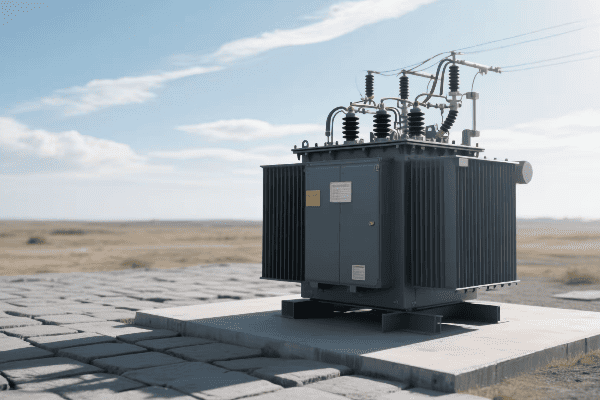
Key Impacts of Transformer Size
-
System Performance
- Larger transformers handle load fluctuations better
- Smaller units may struggle with sudden load increases
-
Energy Efficiency
- Larger transformers typically have lower core losses
- Efficiency peaks at different load percentages based on size
-
Initial Cost
- Larger transformers have higher upfront costs
- Smaller units are more budget-friendly initially
-
Operating Costs
- Larger, more efficient transformers reduce long-term energy costs
- Smaller units may lead to higher electricity bills over time
-
Maintenance and Lifespan
- Larger transformers often have longer lifespans
- Smaller units may require more frequent replacements
| Aspect | Impact of Larger Size | Impact of Smaller Size |
|---|---|---|
| Performance | Better load handling | May limit system capacity |
| Efficiency | Higher at varied loads | Optimal at specific load |
| Initial Cost | Higher investment | More budget-friendly |
| Operating Cost | Lower long-term costs | Potentially higher energy bills |
| Lifespan | Typically longer | May require earlier replacement |
Throughout my career, I’ve seen firsthand how transformer size can make or break an electrical system’s performance and cost-effectiveness. One particularly illustrative case was a comparison study we conducted for a large commercial complex.
We analyzed two options: a 2000 kVA transformer and a 2500 kVA transformer. The 2000 kVA unit was cheaper upfront, saving the client about $15,000 in initial costs. However, our load analysis showed that it would frequently operate near its maximum capacity, reducing efficiency and increasing the risk of overloads.
The 2500 kVA transformer, while more expensive initially, proved to be the better choice in the long run. Its efficiency at the expected load levels was about 2% higher than the smaller unit. This might not sound like much, but over the 20-year lifespan of the transformer, it translated to energy savings of over $100,000. Plus, it provided ample capacity for future expansion, avoiding the need for costly upgrades down the line.
I’ve also seen the pitfalls of undersizing transformers. In a manufacturing plant project, the client insisted on a smaller, cheaper transformer despite our recommendations. Within two years, they faced issues with voltage regulation and occasional overloads during peak production times. The cost of lost production and eventual transformer replacement far exceeded the initial savings.
On the flip side, oversizing can also be problematic. I worked on a small office building where the original plans called for a 500 kVA transformer. After a detailed load analysis, we determined that a 300 kVA unit would be more than sufficient. This not only saved on initial costs but also improved the system’s overall efficiency, as the transformer operated closer to its optimal load range.
Maintenance and lifespan considerations are often overlooked but are crucial in the long term. Larger transformers, when properly sized, tend to run cooler and experience less stress, often leading to longer lifespans. I recall a industrial site where we replaced a 15-year-old undersized transformer that had degraded due to frequent overloading. The new, properly sized unit is expected to last well over 25 years under similar operating conditions.
Another interesting aspect is the impact of transformer size on system stability. In a project for a research facility with sensitive equipment, we opted for a slightly larger transformer than strictly necessary. This choice provided better voltage regulation and reduced the impact of load fluctuations, creating a more stable power environment for their delicate instruments.
Pad Mounted Transformer Sizing Strategies for Different Sectors: Residential, Commercial, and Industrial?
Are you puzzled by the different approaches to transformer sizing across various sectors? You’re not alone. Many engineers struggle to adapt their strategies for different applications.
Pad mounted transformer sizing strategies vary significantly across sectors. Residential areas focus on load diversity and future growth, commercial sectors prioritize energy efficiency and peak load management, while industrial applications emphasize reliability and specific load characteristics. Each sector requires a tailored approach to ensure optimal performance and cost-effectiveness.
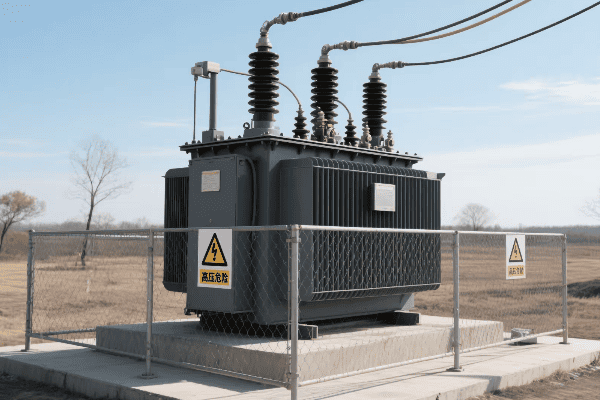
Sector-Specific Sizing Strategies
-
Residential Sector
- Focus on load diversity factor
- Consider future growth (e.g., EV charging)
- Typical sizes: 15-150 kVA
-
Commercial Sector
- Emphasize energy efficiency
- Account for peak load times
- Typical sizes: 150-2500 kVA
-
Industrial Sector
- Prioritize reliability and specific load profiles
- Consider power quality requirements
- Typical sizes: 500-5000 kVA or more
-
Specialized Applications
- Tailor to unique requirements (e.g., data centers, hospitals)
- Focus on redundancy and critical load support
| Sector | Key Sizing Factors | Typical Size Range | Special Considerations |
|---|---|---|---|
| Residential | Load diversity, growth | 15-150 kVA | EV charging, smart homes |
| Commercial | Efficiency, peak loads | 150-2500 kVA | HVAC, lighting loads |
| Industrial | Reliability, load profile | 500-5000+ kVA | Motor loads, power quality |
| Specialized | Redundancy, critical loads | Varies | Backup power, sensitive equipment |
In my years of experience, I’ve developed and applied various sizing strategies across these sectors. Each presents its unique challenges and considerations.
For residential projects, load diversity is key. I remember working on a new suburban development where we had to size transformers for 200 homes. Instead of simply multiplying the average home’s peak demand by 200, we applied a diversity factor. We found that the actual peak demand was only about 40% of the theoretical maximum. This allowed us to use smaller, more cost-effective transformers without compromising reliability.
Another crucial factor in residential sizing is future-proofing. In a recent project, we factored in the potential adoption of electric vehicles. We increased the transformer capacity by about 20% to accommodate future EV charging loads. This foresight has already paid off, as EV adoption in the area has grown faster than initially predicted.
Commercial sector sizing is all about balancing efficiency with peak load management. I worked on a shopping mall project where the challenge was handling the significant load variations between business hours and off-peak times. We chose a transformer that operated efficiently at both low and high loads. We also implemented a smart load management system that could shed non-essential loads during peak times, allowing for a more optimally sized transformer.
Energy efficiency is increasingly important in commercial applications. In a recent office building project, we opted for a slightly larger transformer that operated more efficiently at the expected load range. The higher upfront cost was justified by significant energy savings over the transformer’s lifespan.
Industrial sector sizing is perhaps the most complex. I once worked on a manufacturing plant where the load profile was highly variable due to large motor starts and stops. We had to size the transformer not just for the total load, but also to handle the inrush currents from motor startups. We ended up using a larger transformer than the steady-state load would suggest, coupled with soft-start motor controllers to manage the startup loads.
Power quality is another critical factor in industrial applications. For a precision manufacturing facility, we not only sized the transformer for the load but also incorporated additional features like harmonic mitigation. This ensured a stable, clean power supply crucial for their sensitive equipment.
Specialized applications often require unique approaches. For a data center project, reliability was paramount. We implemented an N+1 redundancy strategy, essentially providing an extra transformer that could handle the full load if the primary unit failed. This approach required careful sizing to ensure each transformer could efficiently handle both normal and full-load scenarios.
In a hospital project, we had to consider both the normal operating loads and critical emergency loads. We sized the main transformer to handle the full hospital load, but also incorporated smaller, dedicated transformers for critical areas like operating rooms and life support systems. This layered approach ensured reliable power even in worst-case scenarios.
Future-Proofing Electrical Systems: Considerations for Pad Mounted Transformer Sizes in Long-Term Planning?
Are you worried about your electrical system becoming obsolete in a few years? Future-proofing is a common concern, and it starts with choosing the right transformer size.
Future-proofing electrical systems involves sizing pad mounted transformers with consideration for load growth, technological advancements, and changing energy patterns. Key factors include oversizing by 15-25%, incorporating smart grid capabilities, and allowing for renewable energy integration. This approach ensures long-term system viability and cost-effectiveness.
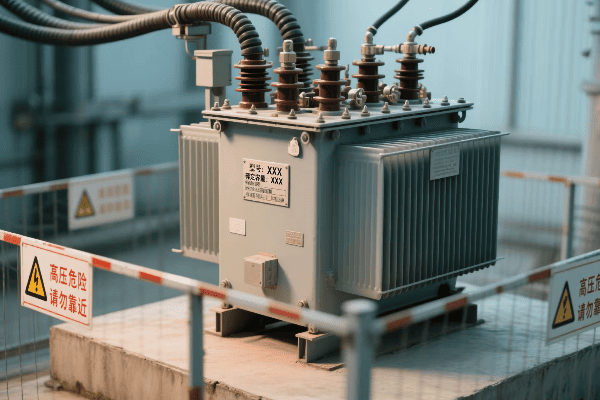
Key Considerations for Future-Proofing
-
Load Growth Projection
- Estimate 10-20 year load increases – Consider demographic and technological trends
-
Smart Grid Integration
- Choose transformers with monitoring capabilities
- Allow for remote control and data collection
-
Renewable Energy Compatibility
- Plan for potential solar or wind integration
- Consider bidirectional power flow capabilities
-
Energy Storage Readiness
- Anticipate future battery storage systems
- Size for potential peak shaving applications
-
Electrification Trends
- Account for increased EV charging needs
- Consider potential shift from gas to electric appliances
| Consideration | Impact on Sizing | Long-Term Benefit |
|---|---|---|
| Load Growth | 15-25% oversizing | Avoid early replacement |
| Smart Grid | Additional monitoring equipment | Improved efficiency and reliability |
| Renewables | Bidirectional capability | Easier integration of green energy |
| Energy Storage | Higher capacity | Potential for peak load management |
| Electrification | Increased overall capacity | Ready for evolving energy needs |
In my experience, future-proofing electrical systems is one of the most challenging yet rewarding aspects of transformer sizing. I’ve seen numerous cases where foresight in sizing has paid off tremendously in the long run.
One particularly memorable project was for a large residential development. Initially, the developer wanted to size the transformers based on current typical household usage. However, we convinced them to oversize by about 20%. This decision was based on our analysis of emerging trends in home electrification and increasing power demands from smart home technologies.
Fast forward five years, and that decision has proven invaluable. The community has seen a rapid adoption of electric vehicles, with nearly 30% of homes now having at least one EV. Additionally, many homes have installed solar panels and home battery systems. The oversized transformers have easily accommodated these changes without any need for upgrades.
Smart grid integration is another crucial aspect of future-proofing. In a recent commercial project, we installed transformers with advanced monitoring and communication capabilities. These smart transformers can report real-time data on load, temperature, and efficiency. This not only allows for proactive maintenance but also provides valuable data for future expansion planning.
I recall a case where this smart capability proved particularly useful. A shopping center was experiencing unexplained power quality issues. The data from the smart transformer helped us quickly identify that the problem was caused by harmonics from a newly installed HVAC system. We were able to address the issue promptly, avoiding potential equipment damage and downtime.
Renewable energy compatibility is becoming increasingly important. In an industrial park project, we sized the transformers with bidirectional power flow capabilities. At the time, there were no plans for on-site renewable generation. However, within three years, several businesses in the park installed large solar arrays. Thanks to our foresight, integrating this renewable energy into the grid was seamless and cost-effective.
Energy storage readiness is another factor that’s often overlooked. In a recent project for a data center, we sized the transformer to accommodate potential future battery storage systems. This forward-thinking approach paid off when the client decided to install a large-scale battery system for peak shaving just two years later. The existing transformer was able to handle the new system without any modifications.
Electrification trends are rapidly changing the landscape of power distribution. I worked on upgrading the electrical system for a small town that was seeing a shift from gas to electric heating and cooking. We sized the new transformers with this trend in mind, anticipating a 30% increase in electrical load over ten years. Three years in, and we’re already seeing a 15% increase, validating our approach.
One challenging aspect of future-proofing is balancing the upfront costs with long-term benefits. In a recent project for a university campus, we had to justify a significant upfront investment in larger, more advanced transformers. We developed a comprehensive cost-benefit analysis that showed how this investment would save money over the system’s lifetime through improved efficiency, reduced maintenance, and avoided future upgrades.
Another interesting case was a mixed-use development where we implemented a modular approach to transformer sizing. Instead of installing a single large transformer, we used multiple smaller units with the capability to easily add more as demand grew. This approach provided flexibility for future expansion while avoiding the inefficiencies of a significantly oversized system.
Future-proofing also involves considering potential regulatory changes. In one industrial project, we sized the transformer with stricter efficiency standards in mind, anticipating future regulations. This foresight paid off when new energy efficiency laws were indeed implemented a few years later, saving the client from costly compliance upgrades.
Lastly, it’s important to remember that future-proofing isn’t just about size. In a recent smart city project, we focused on installing transformers with advanced diagnostic capabilities and the ability to self-heal minor issues. This not only extended the life of the transformers but also significantly reduced maintenance costs and improved overall grid reliability.
Conclusion
Proper sizing of pad mounted transformers is crucial for efficient, reliable, and future-ready electrical systems. It requires careful consideration of current needs, future growth, and emerging technologies. By applying sector-specific strategies and forward-thinking approaches, we can create resilient power distribution networks.
Free CHBEB Transformer Catalog Download
Get the full range of CHBEB transformers in one catalog.
Includes oil-immersed, dry-type, pad-mounted, and custom solutions.
Quick Message
Request A free quote
We'd like to work with you
- +86 15558785111
- [email protected]
- +86 15558785111
What We Do
CHINA BEI ER BIAN (CHBEB) GROUP, with 218 million in registered capital, originated from Beijing Beierbian Transformer Group. Headquartered in Beijing for R&D, it operates major production bases in Nanjing and Yueqing, producing high-quality products.
Latest Product
address
BeiJing
No 3,RongJing East Road,BeiJing Economic Technological Development Area,BeiJing,China
JiangSu
No 7️Xiangfeng Road,Jiangning,NanJing,JiangSu,China
WenZhou
No.211, Wei 16 Road, Industrial Zone, Yueqing, Wenzhou, Zhejiang, China.
XiangYang Industrial Zone ,YueQing,WenZhou,ZheJiang,China
contact us
- [email protected]
- +86 13057780111
- +86 13057780111
- +86 15558785111
Copyright © Bei Er Bian Group


